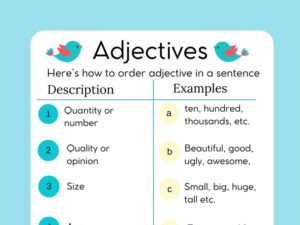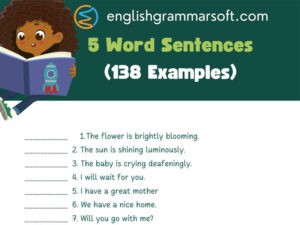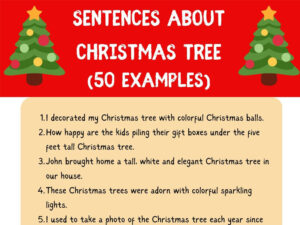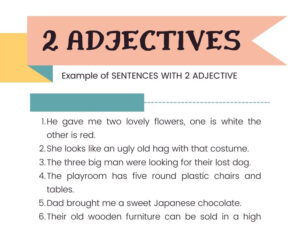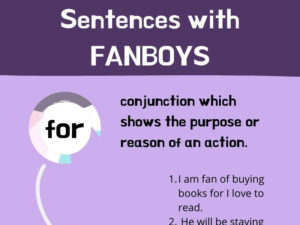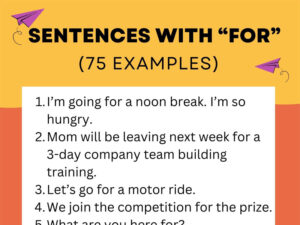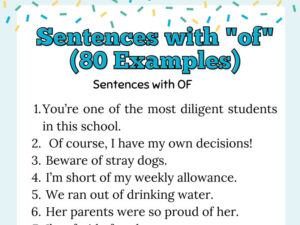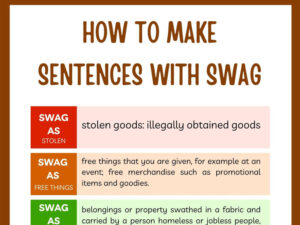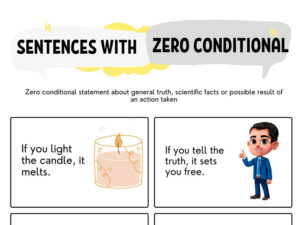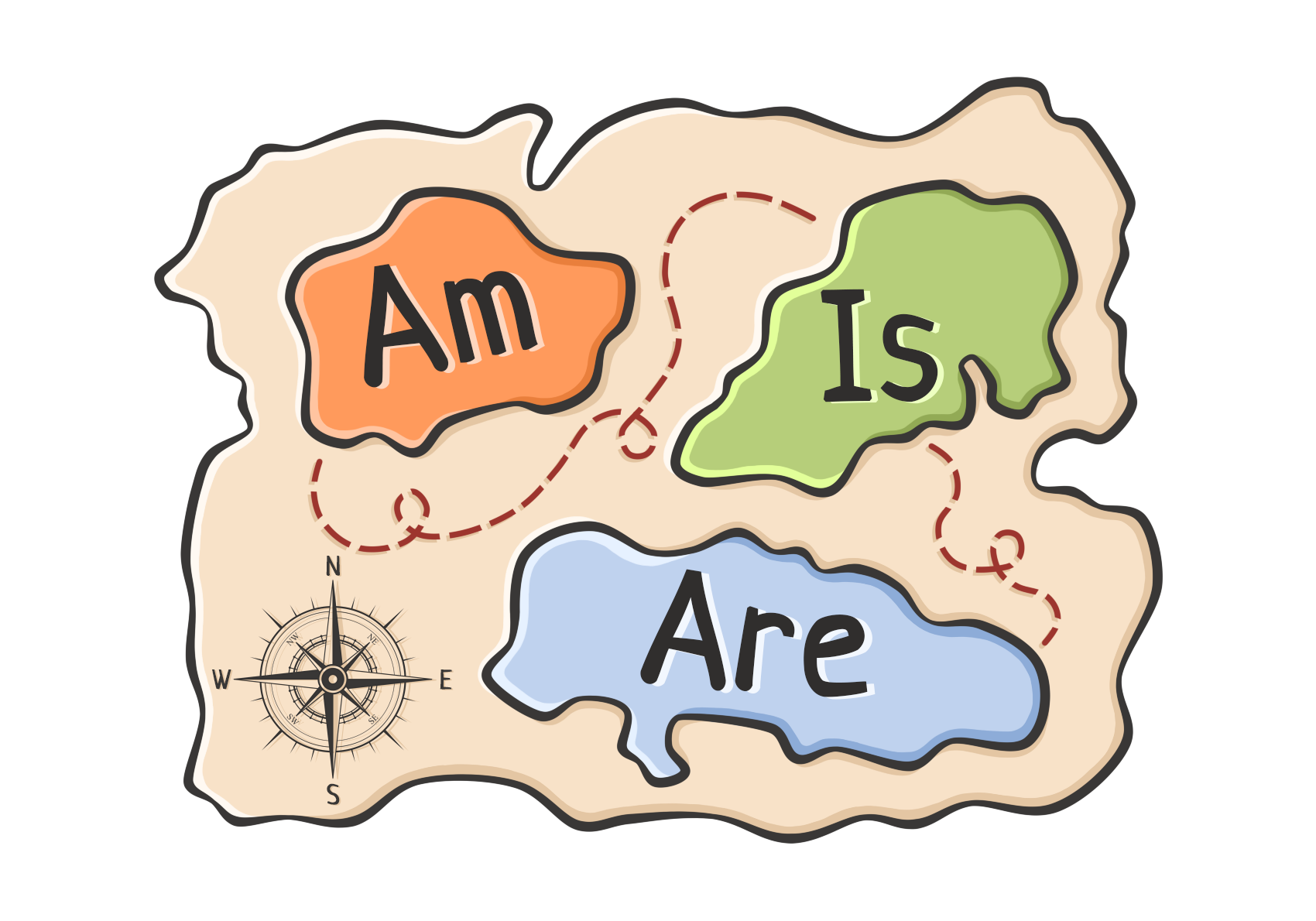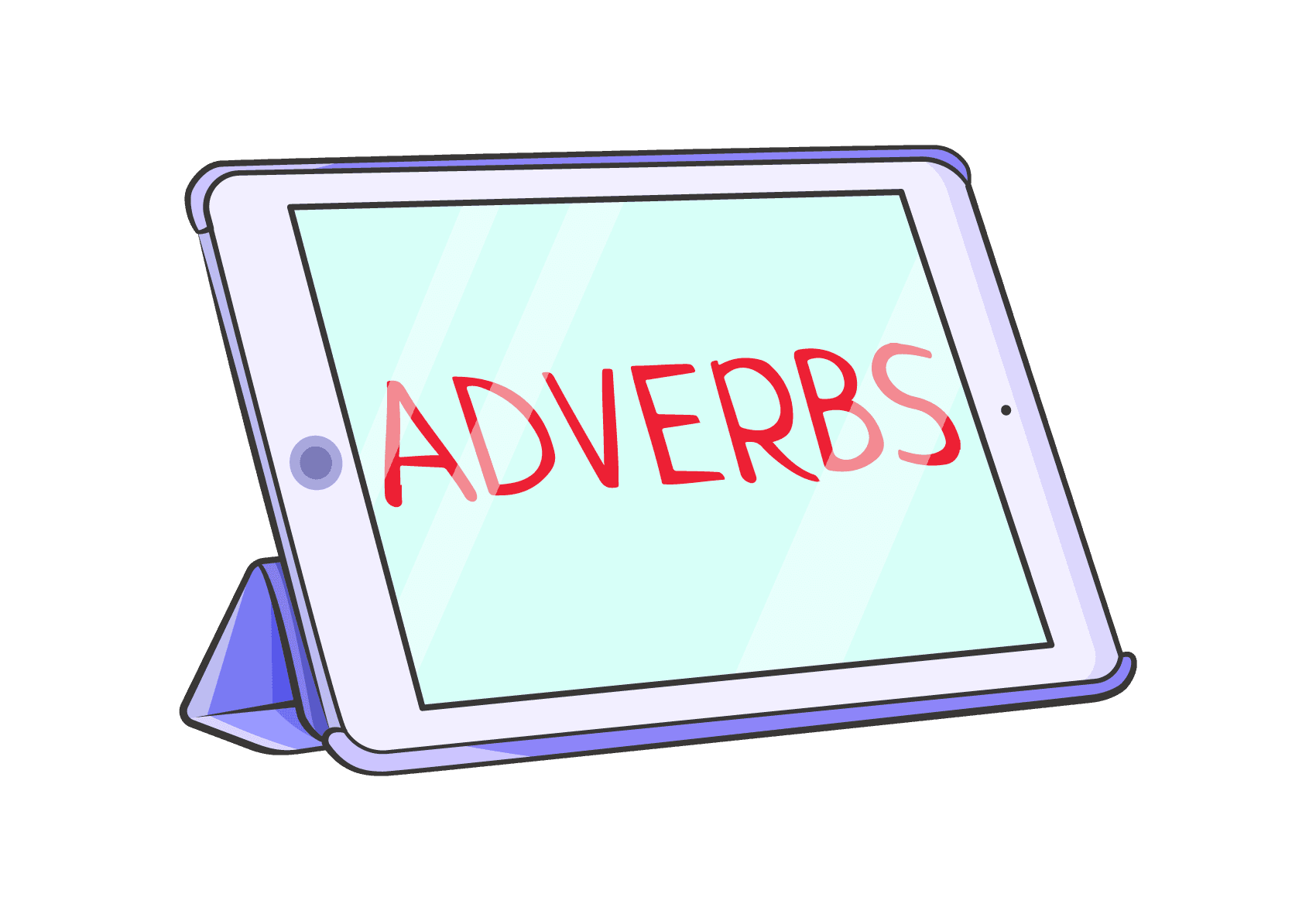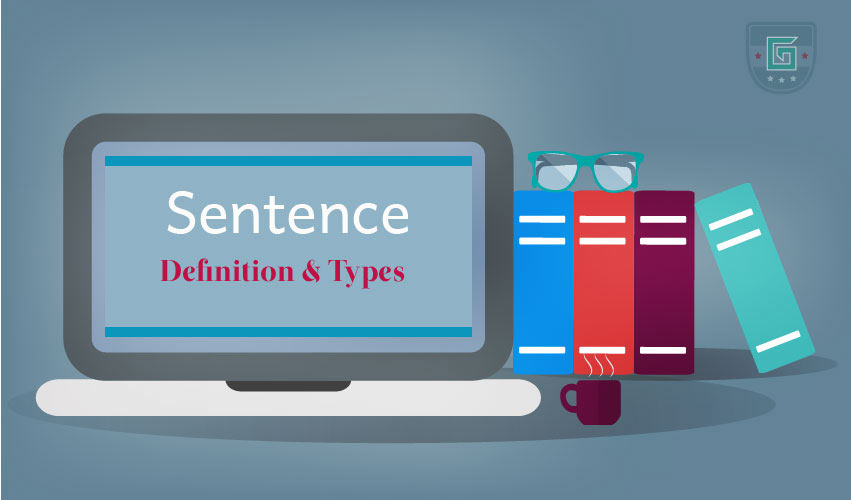Three word expressions are common in English. Practising them and using them when you speak will help you sound more natural.
Here are ten common English expressions, along with an explanation and example sentence.
Black and white
Dos and don’ts
Haves and have nots
Ins and outs
Kiss and tell
Odds and ends
P’s and Q’s
Pros and cons
Rights and wrongs
Tried and tested
black and white = something which is extremely clear: “He told her in black and white that she couldn’t leave the house while he was out.”
dos and don’ts = the rules: “There are various do’s and don’ts about driving in the UK.”
haves and have nots = people who are rich and those who are not: “In London you can find the haves and have nots of the population.”
ins and outs = the details: “I don’t know the ins and outs of the situation, so I can’t really advise you.”
kiss and tell = when someone sells a story of themselves and a famous person: “The British tabloids are famous for publishing kiss and tell stories.”
odds and ends = small pieces of various items: “She made a stew with the odds and ends she found in the fridge.”
P’s and Q’s = manners (such as please and thank you): “Mind your P’s and Q’s when you visit them!”
pros and cons = advantages and disadvantages: “There are a few pros and cons that we should consider before buying a new house.”
rights and wrongs = all the good points and bad points of a situation: “Regardless of the rights and wrongs of company policy, you need to give a month’s notice.”
tried and tested = something which has been well tested: “Using salt is a tried and tested way of getting red wine out of a carpet.”
Here are ten more expressions:
Ups and downs
Come and go
Back and forth
Dribs and drabs
Said and done
Cat and mouse
Trial and error
Flesh and blood
Down and out
By and large
ups and downs = very good times and very bad times: “They have a lot of ups and downs in their relationship.”
come and go = use somewhere as your base: “Feel free to come and go as you please!”
back and forth = not to stay still, but to keep travelling between two places: “I’m so glad I’m moving. I was getting sick of going back and forth every day. Now my journey to work will be a lot quicker.”
dribs and drabs = not a steady amount of something: “The marathon runners finished in dribs and drabs.”
said and done = to have the final word on something: “When it’s all said and done, the new reception area is going to be a credit to the company.”
cat and mouse = doing something in the same way that a cat plays with a mouse: “The guerillas played a cat and mouse game with the much better-equipped army.”
trial and error = to do something new by making experiments and occasionally failing: “The new computer system has been installed. But it’s a bit trial and error at the moment – nobody really knows how to use it.”
flesh and blood = your family: “I have to help him if I can – he’s my flesh and blood.”
down and out = someone who has no money at all who has to live on the street: “There are too many young down and outs in London.”
by and large = generally: “By and large, our customers prefer good service to low prices.”
And a further ten expressions:
Up and running = in operation: “The new company is now up and running.”
Noughts and crosses = a game where you take it in turns to put your symbol (either a nought or a cross) into one of nine spaces. The idea is to have a row of either three noughts or three crosses, but your opponent tries to block you. The game looks like this:
O X O
X O X
X O X
Bring and buy = a fair where people try to raise money for a cause by bringing something that other people might want to buy: “I’m making a cake for the school’s bring and buy next week.”
Hide and seek = a children’s game where one child hides and the others try to find him / her: “Someone’s been playing hide and seek with the TV remote control again!”
Around and about = a vague phrase to avoid saying where you have been exactly: “Where have you been – I’ve been worried!”
“Oh, around and about, you know.”
To and fro = another way of saying “back and forth”: “I’m exhausted – I’ve been going to and fro all week!”
Over and out = something you say to show you have come to the end of your message: “The last thing they heard from the pilot was ‘over and out’.”
Done and dusted = properly finished: “Well, that’s this project done and dusted. We need a holiday now.”
Dead and buried = something that will not happen: “That idea is now dead and buried – the Executive Committee decided some time ago to go with another proposal.”
Wine and dine = to entertain someone lavishly: “He’s well-known for wining and dining his business partners.”
Bread and butter = your main source of income, or the most important issue: “Health and education are the bread and butter issues facing the UK government.”
Spick and span = very tidy and clean: “Her house is spick and span at all times.”
Wheel and deal = to make deals when buying and selling things: “If you need a new car, try speaking to John. He’s a bit of a wheeler and dealer!”
-
Главная
-
General Classes
-
Three Word Sentences Practice | Daily Use English Sentences | Basic English Sentences |
Просмотров: 145 430
Если вам понравилось бесплатно смотреть видео three word sentences practice | daily use english sentences | basic english sentences | онлайн которое загрузил General Classes 16 июня 2021 длительностью 01 ч 09 мин 05 сек в хорошем качестве, то расскажите об этом видео своим друзьям, ведь его посмотрели 145 430 раз.
Manij Bashpiya
1 месяц назад
👌👌👌
Magan Vaghani
4 месяца назад
Good English class
Magan Vaghani
4 месяца назад
Very nice
Magan Vaghani
4 месяца назад
Khub Saras 👌
Ashalata Karmokar
5 месяцев назад
V̲e̲r̲y̲ n̲i̲c̲e̲
N Karthikeya
6 месяцев назад
Super 💖💖💖
Vinod Prasad
7 месяцев назад
Very usefull knowleg sir 3
Aamir Khan
7 месяцев назад
Super
equbal panna
7 месяцев назад
Welcome
Nitesh Upadhyay
8 месяцев назад
Holdmyhand
Vandana Kashyap
11 месяцев назад
thank you
singhusha Singh
11 месяцев назад
👌👌👌
Chandan Yadav
1 год назад
Good english class thanks
Chandan Yadav
1 год назад
Sir
r Singh
1 год назад
Your method is very easy thanks 🙏
Sardar Patel Swaasthya Sewa Kendra
1 год назад
Sir you teach very well, but you should improve your communication
RAVI SHANKAR
1 год назад
Good English 👍🙂
Sadgi singh Sadgi singh
1 год назад
Thanks🙏🙏🙏
motivational vedios
1 год назад
Some sentences are repeated
Sudhir Kumar
1 год назад
Winners never quit.
You may be puzzled about how to make sentences with three (3) adjectives. Sometimes, you may find it tough to make sentences with more than…
A sentence is a group of words containing a subject (the topic in the sentence) and a predicate (the word that describes the subject) and…
One of the most fun words to say but hard to spell out in English is the figure of speech “onomatopoeia”. It could be a bunch…
“Oh, Christmas Tree, oh Christmas tree, how beautiful your branches are”. This is a line of a song we sang when I was still a…
An adjective is one of the parts of speech, which words, describes, or modifies a noun or a pronoun such for example pretty…. ugly…. old…
FANBOYS – an acronym for words known as coordinating conjunctions. These words: For, And, Nor, But, Or, Yet and So, were abbreviated for easy recall….
In this lesson, we are going to learn the word “for” and make “sentences with for”. This three letter word (FOR) could either be used…
In today’s lesson, we will learn the importance of the word “of” and make sentences with “of”. The word “Of” is a preposition that points…
How to make sentences with swag? “SWAG” is a word not so familiar in the English language but was used with different meanings. ‘Swag’ is…
Mastering grammar is sometimes difficult and complicated. But learning step by step will lead you to master what seems to be difficult. One of the…
На основании Вашего запроса эти примеры могут содержать грубую лексику.
На основании Вашего запроса эти примеры могут содержать разговорную лексику.
A typical 2-year-old can say about 50 words and speak in two- and three-word sentences.
Среднестатистический 2-летний ребенок может сказать около 50 слов и говорить предложениями из двух-трех слов.
Другие результаты
By a year old he would say two and three word sentences.
В год и два месяца он мог произнести фразу из трех слов.
It’s a three-word sentence that fills me with hope every time I read it.
Есть З слова, которые вселяют в меня надежду всякий раз, когда я их читаю.
It can’t be said in two or three word sentences.
О ней невозможно рассказать в двух — трех словах.
making a three-word sentence, but, honestly,
Her conversation has never changed from her two or three words sentence, and there was no adjectives she added, just factual information only.
Её реплики почти не отличались друг от друга за исключением двух-трех слов, она не добавляла никаких прилагательных — только факты.
The commitment to another through these three words is a sought after goal for many individuals-and when those words are first uttered, they may carry more weight than any other three-word sentence you’ve made to date.
Приверженность другому через эти три слова является желанной целью для многих людей — и когда эти слова впервые произносятся, они могут иметь больший вес, чем любое другое.
These weren’t two or three words but full sentences.
For AI, all three words in the sentence are absent in the dictionary of the Russian language.
At 4.5 years old a quarter of children could form short (two-three word) sentences, 50% at age 5 and almost all at age 10.
25? % детей могут говорить короткие предложения к 4,5 годам, 50? % — к 5,5 годам и почти все к 10 годам.
If your child is «quiet,» but is capable of putting together two- or three-word phrases and sentences when needed, such as «Me big boy!» that may very well be a function of his personality.
Если ваш ребенок тихий, но способен составить фразу или предложение из двух или трех слов, например «Я большой мальчик!», возможно, его немногословность является его личностной особенностью.
The pupil, though he fail to understand two or three words in a sentence, may comprehend the delicate shades of thought or its relation to what went before.
Ученик, не понимая двух-трех слов в фразе, может понимать тонкий оттенок мысли или отношение ее к предыдущему.
You managed to string three words together in a sentence.
While undressing it occurred to me that if I had added certain three words to the final sentence of the last paragraph, the sense of the whole paragraph would have been strengthened.
Когда я раздевался, мне пришло в голову, что если в последнем предложении последнего абзаца я бы добавил три определённых слова, то это бы лучше передавало смысл всего абзаца.
You can also use the three words in the same sentence, as in
Можно использовать те же фразы, что и в личном письме, например
At age three, a communication milestone might be saying three— or four-word sentences.
could not form sentences of three— or four-word sentences,
If you can not explain in simple words in three sentences, why people need your product, you have no value proposition and, consequently, you have no business.
Если вы не можете объяснить простыми словами в трех предложениях, почему людям нужен ваш товар, у вас нет ценного далее
Uses two-three word sentences frequently
In a sentence or two, Eric describes jazz with three words: for adults only.
Результатов: 32. Точных совпадений: 1. Затраченное время: 107 мс
Documents
Корпоративные решения
Спряжение
Синонимы
Корректор
Справка и о нас
Индекс слова: 1-300, 301-600, 601-900
Индекс выражения: 1-400, 401-800, 801-1200
Индекс фразы: 1-400, 401-800, 801-1200
Можно ли использовать вопросительный порядок слов в утвердительных предложениях? Как построить предложение, если в нем нет подлежащего? Об этих и других нюансах читайте в нашей статье.
Прямой порядок слов в английских предложениях
Утвердительные предложения
В английском языке основной порядок слов можно описать формулой SVO: subject – verb – object (подлежащее – сказуемое – дополнение).
Mary reads many books. — Мэри читает много книг.
Подлежащее — это существительное или местоимение, которое стоит в начале предложения (кто? — Mary).
Сказуемое — это глагол, который стоит после подлежащего (что делает? — reads).
Дополнение — это существительное или местоимение, которое стоит после глагола (что? — books).
В английском отсутствуют падежи, поэтому необходимо строго соблюдать основной порядок слов, так как часто это единственное, что указывает на связь между словами.
| Подлежащее | Сказуемое | Дополнение | Перевод |
|---|---|---|---|
| My mum | loves | soap operas. | Моя мама любит мыльные оперы. |
| Sally | found | her keys. | Салли нашла свои ключи. |
| I | remember | you. | Я помню тебя. |
Глагол to be в утвердительных предложениях
Как правило, английское предложение не обходится без сказуемого, выраженного глаголом. Так как в русском можно построить предложение без глагола, мы часто забываем о нем в английском. Например:
Mary is a teacher. — Мэри — учительница. (Мэри является учительницей.)
I’m scared. — Мне страшно. (Я являюсь напуганной.)
Life is unfair. — Жизнь несправедлива. (Жизнь является несправедливой.)
My younger brother is ten years old. — Моему младшему брату десять лет. (Моему младшему брату есть десять лет.)
His friends are from Spain. — Его друзья из Испании. (Его друзья происходят из Испании.)
The vase is on the table. — Ваза на столе. (Ваза находится/стоит на столе.)
Подведем итог, глагол to be в переводе на русский может означать:
- быть/есть/являться;
- находиться / пребывать (в каком-то месте или состоянии);
- существовать;
- происходить (из какой-то местности).
Если вы не уверены, нужен ли to be в вашем предложении в настоящем времени, то переведите предложение в прошедшее время: я на работе — я была на работе. Если в прошедшем времени появляется глагол-связка, то и в настоящем он необходим.
Предложения с there is / there are
Когда мы хотим сказать, что что-то где-то есть или чего-то где-то нет, то нам нужно придерживаться конструкции there + to be в начале предложения.
There is grass in the yard, there is wood on the grass. — На дворе — трава, на траве — дрова.
Если в таких типах предложений мы не используем конструкцию there is / there are, то по-английски подобные предложения будут звучать менее естественно:
There are a lot of people in the room. — В комнате много людей. (естественно)
A lot of people are in the room. — Много людей находится в комнате. (менее естественно)
Обратите внимание, предложения с there is / there are, как правило, переводятся на русский с конца предложения.
Еще конструкция there is / there are нужна, чтобы соблюсти основной порядок слов — SVO (подлежащее – сказуемое – дополнение):
| Подлежащее | Сказуемое | Дополнение | Перевод |
|---|---|---|---|
| There | is | too much sugar in my tea. | В моем чае слишком много сахара. |
Более подробно о конструкции there is / there are можно прочитать в статье «Грамматика английского языка для начинающих, часть 3».
Местоимение it
Мы, как носители русского языка, в английских предложениях забываем не только про сказуемое, но и про подлежащее. Особенно сложно понять, как перевести на английский подобные предложения: Темнеет. Пора вставать. Приятно было пообщаться. В английском языке во всех этих предложениях должно стоять подлежащее, роль которого будет играть вводное местоимение it. Особенно важно его не забыть, если мы говорим о погоде.
It’s getting dark. — Темнеет.
It’s time to get up. — Пора вставать.
It was nice to talk to you. — Приятно было пообщаться.
Хотите научиться грамотно говорить по-английски? Тогда записывайтесь на курс практической грамматики.
Отрицательные предложения
Если предложение отрицательное, то мы ставим отрицательную частицу not после:
- вспомогательного глагола (auxiliary verb);
- модального глагола (modal verb).
| Подлежащее | Вспомогательный/Модальный глагол | Частица not | Сказуемое | Дополнение | Перевод |
|---|---|---|---|---|---|
| Sally | has | not | found | her keys. | Салли не нашла свои ключи. |
| My mum | does | not | love | soap operas. | Моя мама не любит мыльные оперы. |
| He | could | not | save | his reputation. | Он не мог спасти свою репутацию |
| I | will | not | be | yours. | Я не буду твоей. |
Если в предложении единственный глагол — to be, то ставим not после него.
| Подлежащее | Глагол to be | Частица not | Дополнение | Перевод |
|---|---|---|---|---|
| Peter | is | not | an engineer. | Питер не инженер. |
| I | was | not | at work yesterday. | Я не была вчера на работе. |
| Her friends | were | not | polite enough. | Ее друзья были недостаточно вежливы. |
Порядок слов в вопросах
Для начала скажем, что вопросы бывают двух основных типов:
- закрытые вопросы (вопросы с ответом «да/нет»);
- открытые вопросы (вопросы, на которые можно дать развернутый ответ).
Закрытые вопросы
Чтобы построить вопрос «да/нет», нужно поставить модальный или вспомогательный глагол в начало предложения. Получится следующая структура: вспомогательный/модальный глагол – подлежащее – сказуемое. Следующие примеры вам помогут понять, как утвердительное предложение преобразовать в вопросительное.
She goes to the gym on Mondays. — Она ходит в зал по понедельникам.
Does she go to the gym on Mondays? — Ходит ли она в зал по понедельникам?
He can speak English fluently. — Он умеет бегло говорить по-английски.
Can he speak English fluently? — Умеет ли он бегло говорить по-английски?
Simon has always loved Katy. — Саймон всегда любил Кэти.
Has Simon always loved Katy? — Всегда ли Саймон любил Кэти?
Обратите внимание! Если в предложении есть только глагол to be, то в Present Simple и Past Simple мы перенесем его в начало предложения.
She was at home all day yesterday. — Она была дома весь день.
Was she at home all day yesterday? — Она была дома весь день?
They’re tired. — Они устали.
Are they tired? — Они устали?
Открытые вопросы
В вопросах открытого типа порядок слов такой же, только в начало предложения необходимо добавить вопросительное слово. Тогда структура предложения будет следующая: вопросительное слово – вспомогательный/модальный глагол – подлежащее – сказуемое.
Перечислим вопросительные слова: what (что?, какой?), who (кто?), where (где?, куда?), why (почему?, зачем?), how (как?), when (когда?), which (который?), whose (чей?), whom (кого?, кому?).
He was at work on Monday. — В понедельник он весь день был на работе.
Where was he on Monday? — Где он был в понедельник?
She went to the cinema yesterday. — Она вчера ходила в кино.
Where did she go yesterday? — Куда она вчера ходила?
My father watches Netflix every day. — Мой отец каждый день смотрит Netflix.
How often does your father watch Netflix? — Как часто твой отец смотрит Netflix?
Вопросы к подлежащему
В английском есть такой тип вопросов, как вопросы к подлежащему. У них порядок слов такой же, как и в утвердительных предложениях, только в начале будет стоять вопросительное слово вместо подлежащего. Сравните:
Who do you love? — Кого ты любишь? (подлежащее you)
Who loves you? — Кто тебя любит? (подлежащее who)
Whose phone did she find two days ago? — Чей телефон она вчера нашла? (подлежащее she)
Whose phone is ringing? — Чей телефон звонит? (подлежащее whose phone)
What have you done? — Что ты наделал? (подлежащее you)
What happened? — Что случилось? (подлежащее what)
Обратите внимание! После вопросительных слов who и what необходимо использовать глагол в единственном числе.
Who lives in this mansion? — Кто живет в этом особняке?
What makes us human? — Что делает нас людьми?
Косвенные вопросы
Если вам нужно что-то узнать и вы хотите звучать более вежливо, то можете начать свой вопрос с таких фраз, как: Could you tell me… ? (Можете подсказать… ?), Can you please help… ? (Можете помочь… ?) Далее задавайте вопрос, но используйте прямой порядок слов.
Could you tell me where is the post office is? — Не могли бы вы мне подсказать, где находится почта?
Do you know what time does the store opens? — Вы знаете, во сколько открывается магазин?
Если в косвенный вопрос мы трансформируем вопрос типа «да/нет», то перед вопросительной частью нам понадобится частица «ли» — if или whether.
Do you like action films? — Тебе нравятся боевики?
I wonder if/whether you like action films. — Мне интересно узнать, нравятся ли тебе экшн-фильмы.
Другие члены предложения
Прилагательное в английском стоит перед существительным, а наречие обычно — в конце предложения.
Grace Kelly was a beautiful woman. — Грейс Келли была красивой женщиной.
Andy reads well. — Энди хорошо читает.
Обстоятельство, как правило, стоит в конце предложения. Оно отвечает на вопросы как?, где?, куда?, почему?, когда?
There was no rain last summer. — Прошлым летом не было дождя.
The town hall is in the city center. — Администрация находится в центре города.
Если в предложении несколько обстоятельств, то их надо ставить в следующем порядке:
| Подлежащее + сказуемое | Обстоятельство (как?) | Обстоятельство (где?) | Обстоятельство (когда?) | Перевод |
|---|---|---|---|---|
| Fergie didn’t perform | very well | at the concert | two years ago. | Ферги не очень хорошо выступила на концерте два года назад. |
Чтобы подчеркнуть, когда или где что-то случилось, мы можем поставить обстоятельство места или времени в начало предложения:
Last Christmas I gave you my heart. But the very next day you gave it away. This year, to save me from tears, I’ll give it to someone special. — Прошлым Рождеством я подарил тебе свое сердце. Но уже на следующий день ты отдала его обратно. В этом году, чтобы больше не горевать, я подарю его кому-нибудь другому.
Если вы хотите преодолеть языковой барьер и начать свободно общаться с иностранцами, записывайтесь на разговорный курс английского.
Надеемся, эта статья была вам полезной и вы разобрались, как строить предложения в английском языке. Предлагаем пройти небольшой тест для закрепления темы.
Тест по теме «Порядок слов в английском предложении, часть 1»
© 2023 englex.ru, копирование материалов возможно только при указании прямой активной ссылки на первоисточник.
Writing Your First English Sentences
Here is a step by step guide to writing your first sentences in English. Follow each step and your sentence will go from simple to complex. Follow these steps to learn how to write three types of simple sentences and learn about parts of speech.
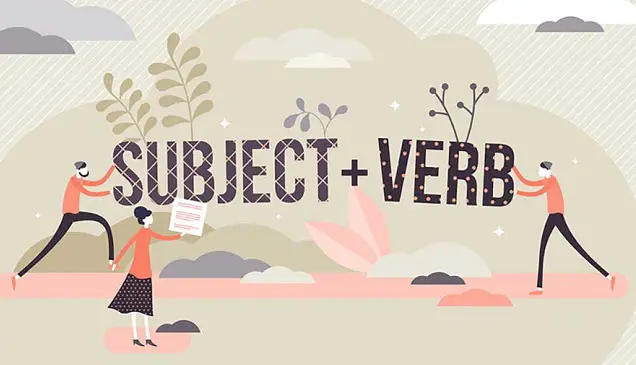
Understand what subjects and verbs are.
Basic Sentence Structure 1
Write down a subject and the verb to ‘be‘. Here are your possibilities:
I am
You are (1 person)
She is
He is
It is
We are
You are (2 or more people)
They are
you can also use names:
Tom is
Anna and Susan are
Mary is
Choose an adjective. Adjectives are words that describe how something or someone is. Here are some adjectives:
big / small
fat / thin
old / new
old / young
easy / difficult
beautiful / ugly
handsome / ugly
fast / slow
funny / boring
interesting / boring
tall / short
intelligent / stupid
Combine your subject with ‘to be‘ with an adjective to write your first complete sentence! Here are some examples:
I am old.
You are young.
She beautiful.
He is thin.
It is new.
We are tall.
You are intelligent.
They are fast.
Basic Sentence structure 2
Write down a subject and the verb ‘to be‘ as you did above.
I am
You are (1 person)
She is
He is
It is
We are
You are (2 or more people)
They are
Choose a noun. Nouns are objects, people, places, jobs at work – in other words the things we find in the world. Let’s begin with what people are. People can be:
doctor
student
banker
teacher
lawyer
Combine the subject and ‘to be‘ with the noun. Place ‘a‘ before the noun when it is one person. Use ‘s‘ at the end of the word if there are two people or more.
I am a teacher.
You are a student.
He is a lawyer.
She is a doctor.
We are teachers.
You are students.
They are doctors.
For things, you can use other nouns. Remember to place ‘a’ before the noun if it is one, or add ‘s’ if there are more than one.
It is a book.
It is a computer.
It is a house.
They are cars.
They are bikes.
They are candles.
Congratulations! Now you can write two types of sentences. Let’s review:
I am tall. I am a student.
You are funny. You are a teacher.
He is fat. He is a banker.
It is difficult. It is a test.
She is beautiful. She is a student.
We are intelligent. We are students.
You are young. You are lawyers.
They are thin. They are doctors.
They are expensive. They are cars.
Basic Sentence structure 3
Combine the two sentences to make a third type of sentence. It’s easy! Take the adjective and place it before the noun after ‘a’. Now you have a third type of sentence. Let’s use the sentences from before:
I am tall. I am a student. -> I am a tall student.
You are funny. You are a teacher. -> You are a funny teacher.
He is fat. He is a banker. -> He is a fat banker.
It is difficult. It is a test. -> It is a difficult test.
She is beautiful. She is a student. -> She is a beautiful student.
We are intelligent. We are students. -> We are intelligent students.
You are young. You are lawyers. -> You are young lawyers.
They are thin. They are doctors. -> They are thin doctors.
They are expensive. They are cars. -> They are expensive cars.
Congratulations on completing the first step to writing sentences in English. Next, learn how to use verbs such as play, go, cook, eat, sleep, work, and more.
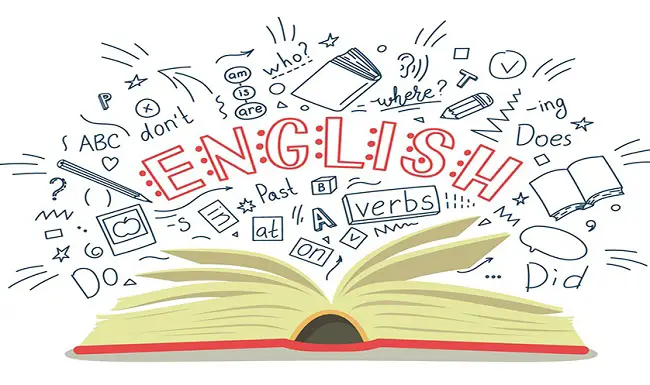
Use these patterns to start writing sentences in English
Here are four types of sentences to begin writing in English. Follow the example in each type of sentence. Learn these symbols to understand each type of sentence. These symbols represent parts of speech in English. Parts of speech are the different types of words in English.
Key to Symbols
S = subject
Subjects include I / you / he / she / it / we / they and names of people: Mark, Mary, Tom, etc. or types of people: children, students, parents, teachers, etc.
V = verb
Simple sentences use the verb ‘be’ such as: I am a teacher. / They are funny. Verbs also tell us what we do: play / eat / drive etc. or what we think: believe / hope / want etc.
N = noun
Nouns are objects such as books, chair, picture, computer, etc. Nouns have singular and plural forms: book – books, child – children, car – cars, etc.
Adj = Adjective
Adjectives tell how someone or something is. For example: big, small, tall, interesting, etc.
Prep P = Prepositional phrase
Prepositional phrases tell us where someone or something is. Prepositional phrases are often three words and begin with a preposition: For example: in the house, at the store, on the wall, etc.
() = Parentheses
If you see something in parentheses () you can use the type of word, or leave it out.
1. Sentences with Nouns
Here is the first type of easy sentence. Use the verb ‘to be’. If you have one object, use ‘a’ or ‘an’ before the object. If you have more than one object, don’t use ‘a’ or ‘an’.
S + be + (a) + N
I am a teacher.
She is a student.
They are boys.
We are workers.
Exercise: Five Sentences with Nouns
On a piece of paper write five sentences using nouns.
2. Sentences with Adjectives
The next type of sentence uses an adjective to describe the subject of a sentence. Do not use ‘a’ or ‘an’ when the sentence ends in an adjective. Do not change the form of the adjective if the subject is plural or singular.
S + be + Adj
Tim is tall.
They are rich.
This is easy.
We are happy.
Exercise: Five Sentences with Adjectives
Use adjectives to write five sentences.
3. Sentences with Adjectives + Nouns
Next, combine the two types of sentences. Place the adjective before the noun it modifies. Use ‘a’ or ‘an’ with singular objects, or nothing with plural objects.
S + be + (a, an) + Adj + N
He is a happy man.
They are funny students.
Mary is a sad girl.
Peter is a good father.
Exercise: Five Sentences with Adjectives + Nouns
Use adjectives + nouns to write five sentences.
4. Add Prepositional Phrases to Your Sentences
The next step is to add short prepositional phrases to tell us where someone or something is. Use ‘a’ or ‘an’ or use ‘the’ before a noun or adjective + noun if the object is singular and specific. ‘The’ is used when something specific is understood by the person writing and the person reading the sentence. Notice that some sentences are written with adjectives and nouns, and others without.
S + be + (a, an, the) + (adj) + (N) + Prep P
Tom is in the room.
Mary is the woman at the door.
There is a book on the table.
There are flowers in the vase.
Exercise: Five Sentences with Prepositional Phrases
Use prepositional phrases to write five sentences.
5. Using Other Verbs
Finally, use other verbs than ‘be’ to express what happens or what people think.
S + V + (a, an, the) + (adj) + (N) + (Prep P)
Peter plays the piano in the living room.
The teacher writes sentences on the board.
We eat lunch in the kitchen.
They buy food at the supermarket.
Exercise: Five Sentences with Prepositional Phrases
Use other verbs to write five sentences.
Sentence Type Basics for English Learners
Writing in English begins with a sentence. Sentences are then combined into larger structures such as essays, business reports, etc. There are four sentence types in English. The first sentence type is the most common:
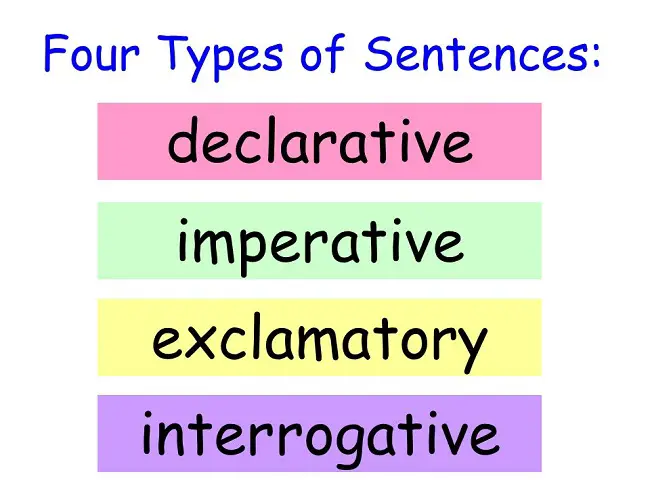
Declarative
A declarative sentence “declares” or states a fact, arrangement or opinion. Declarative sentences can be either positive or negative. A declarative sentences ends with a period (.).
Examples
I’ll meet you at the train station.
The sun rises in the East.
He doesn’t get up early.
Imperative
The imperative form instructs (or sometimes requests). The imperative takes no subject as ‘you’ is the implied subject. The imperative form ends with either a period (.) or an exclamation point (!).
Examples
Open the door.
Finish your homework
Pick up that mess.
Interrogative
The interrogative asks a question. In the interrogative form the auxiliary verb precedes the subject which is then followed by the main verb (i.e., Are you coming ….?). The interrogative form ends with a question mark (?).
Examples
How long have you lived in France?
When does the bus leave?
Do you enjoy listening to classical music?
Exclamatory
The exclamatory form emphasizes a statement (either declarative or imperative) with an exclamation point (!).
Examples
Hurry up!
That sounds fantastic!
I can’t believe you said that!
English Sentence Types
All of these sentence types further fall into four basic sentence type categories in English.
- Simple
- Compound
- Complex
- Compound – Complex
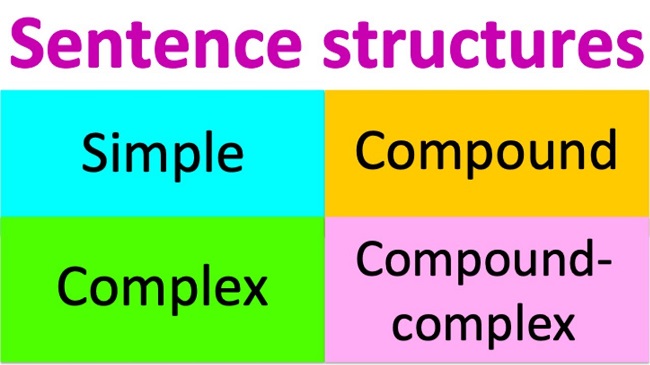
Simple Sentences
Simple sentences contain no conjunction (i.e., and, but, or, etc.).
Examples
Frank ate his dinner quickly.
Peter and Sue visited the museum last Saturday.
Are you coming to the party?
Compound Sentences
Compound sentences contain two statements that are connected by a conjunction (i.e., and, but, or, etc.).
Examples
I wanted to come, but it was late.
The company had an excellent year, so they gave everyone a bonus.
I went shopping, and my wife went to her classes.
Complex Sentences
Complex sentences contain a dependent clause and at least one independent clause. The two clauses are connected by a subordinator (i.e, which, who, although, despite, if, since, etc.).
Examples
My daughter, who was late for class, arrived shortly after the bell rang.
That’s the man who bought our house
Although it was difficult, the class passed the test with excellent marks.
Compound – Complex Sentences
Compound – complex sentences contain at least one dependent clause and more than one independent clause. The clauses are connected by both conjunctions (i.e., but, so, and, etc.) and subordinators (i.e., who, because, although, etc.)
Examples
John, who briefly visited last month, won the prize, and he took a short vacation.
Jack forgot his friend’s birthday, so he sent him a card when he finally remembered.
The report which Tom complied was presented to the board, but it was rejected because it was too complex.
A sentence is the largest unit of any language. In English, it begins with a capital letter and ends with a full-stop, or a question mark, or an exclamation mark.
The sentence is generally defined as a word or a group of words that expresses a thorough idea by giving a statement/order, or asking a question, or exclaiming.
Example:
He is a good boy (statement), Is he a good boy? (question), What a nice weather! (exclaiming).
Ideally, a sentence requires at least one subject and one verb. Sometimes the subject of a sentence can be hidden, but the verb must be visible and present in the sentence. Verb is called the heart of a sentence.
Example:
Do it. (In this sentence, a subject ‘you’ is hidden but verb ‘do’ is visible)
“[A sentence is] a group of words, usually containing a verb, that expresses a thought in the form of a statement, question, instruction, or exclamation and starts with a capital letter when written.” — (Cambridge Advanced Learner’s Dictionary & Thesaurus © Cambridge University Press.)
More Examples of Sentences
In other words, a complete English sentence must have three characteristics:
- First, in written form, a sentence begins with a capital letter and ends with a period (i.e., a full stop) [.], a note of interrogation (i.e., a question mark) [?], or a note of exclamation (i.e., an exclamation mark) [!].
- Second, it must express a complete thought, not fragmented.
- Third, it must contain at least one subject (hidden/visible) and one verb comprising an independent clause. (An independent clause contains an independent subject and verb and expresses a complete thought.)
Types of Sentences
Structurally, sentences are of four types:
- Simple sentence
- Compound sentence
- Complex sentence, and
- Compound-complex sentence.
Simple sentence
A simple sentence must have a single clause (a single verb) which is independent, and it cannot take another clause.
Example:
I always wanted to become a writer. (One clause – one verb)
Compound sentence
A compound sentence must have more than one independent clause with no dependent clauses. Some specific conjunctions, punctuation, or both are used to join together these clauses.
Example:
I always wanted to become a writer, and she wanted to become a doctor. (Two independent clauses – two verbs)
Complex sentence
A complex sentence also has more than one clause but of one them must be an independent clause and the other/others must be (a) dependent clause(es). There are also some particular connectors for the clauses of a complex sentence to be connected.
Example:
I know that you always wanted to be a writer. (Here, a dependent clause is followed by a connector and an independent clause. The other way around is also possible.)
More Complex Sentence Examples
Compound-complex sentence
A compound-complex sentence (or complex–compound sentence) is a mixture of the features of compound and complex sentences in one sentence. So, it must contain at least two independent clauses and at least one dependent clause.
Example:
I know that you always wanted to become a writer, but I always wanted to become a doctor. (Here, one dependent clause is followed by a complex connector and two independent clauses with a compound conjunction between them.)
Functionally, sentences are of mainly four types:
- Declarative sentence
- Imperative sentence
- Interrogative sentence, and
- Exclamatory sentence
Declarative sentence:
An assertive sentence (declarative sentence) simply expresses an opinion/feeling, or makes a statement, or describes things. In other words, it declares something. This type of sentence ends with a period (i.e., a full-stop).
Examples:
- I want to be a good cricketer. (a statement)
- I am very happy today. (a feeling)
More Examples of Declarative Sentence
Imperative sentence:
We use an imperative sentence to make a request or to give a command. Imperative sentences usually end with a period (i.e., a full stop), but under certain circumstances, it can end with a note of exclamation (i.e., exclamation mark).
Examples:
- Please sit down.
- I need you to sit down now!
More Examples of Imperative Sentence
Interrogative sentence:
An interrogative sentence asks a question. Interrogative sentences must end with a note of interrogation (i.e., question mark)
Examples:
- When are you going to submit your assignment?
- Do you know him?
More Examples of Interrogative Sentence
Exclamatory sentence.
An exclamatory sentence expresses overflow of emotions. These emotions can be of happiness, wonder, sorrow, anger, etc.
Examples:
- What a day it was!
- I cannot believe he would do that!
More Examples of Exclamatory Sentence

